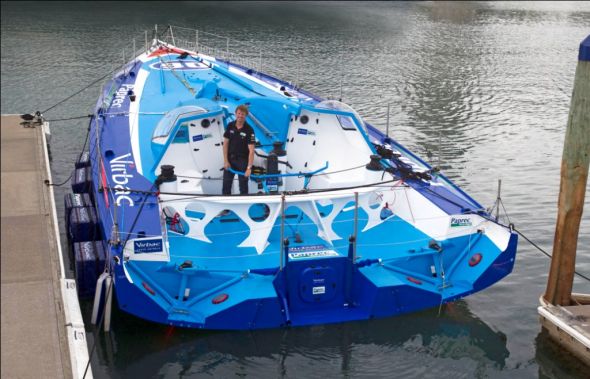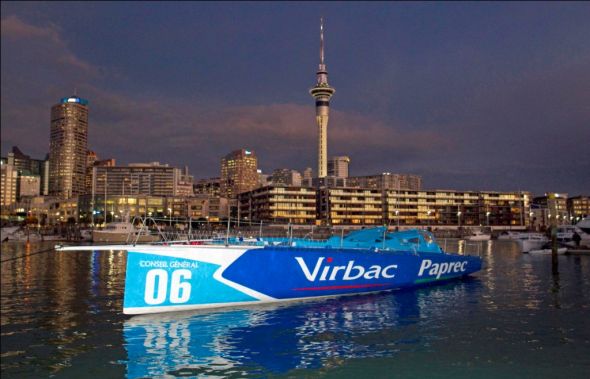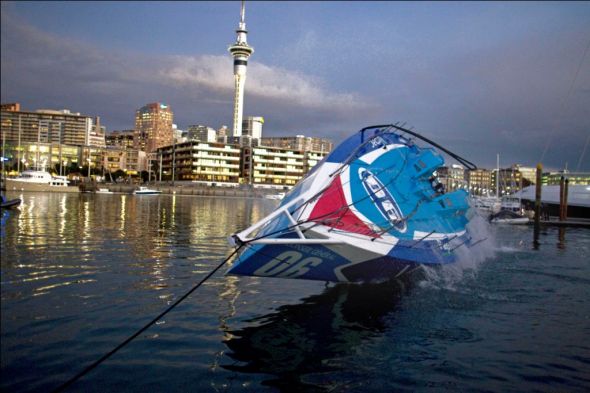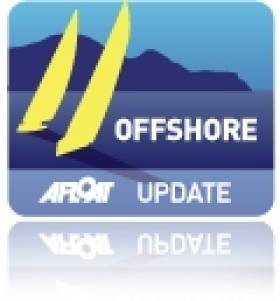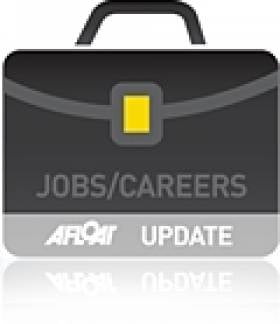Displaying items by tag: Vendee Globe
World Yachting Forum Calls For Change
Delegates attending the World Yacht Racing heard calls for change, modernity and new ways of thinking. These were the main themes at the heart of the conference, which concluded yesterday in Estoril, Portugal.
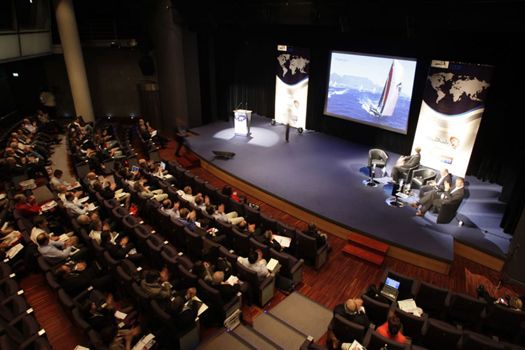
The forum also discussed topics on new media, host cities, sustainable development, the America's Cup and the Olympic Games. The overall consensus arising from the forum concluded that this was a time of transition and there was a need to adapt.
"Sailing is like the Himalayas, there are many 8000 summits: the Cup, the Vendée Globe, the Olympic Games... all of them are difficult to achieve and very different from each other", said Loïck Peyron, the veteran global ocean racer and multi-hull skipper.
"The America's Cup is the perfect illustration following last springs' schism: we all share the same God but not the same religion." he added during his keynote speech.
In order for yacht racing to grow the sport requires ways to find cost effective strategies to grow new audiences via TV and new media. For information about the principle speakers including Maria Ferreras, Head of Partnerships for YouTube, click here . For further details from the conference logon to www.worldyachtracingforum.com/index.html
Knox-Johnston in Search for Ten Skippers
Sailing legend Sir Robin Knox-Johnston has launched his latest search for ten exceptional skippers to lead the internationally sponsored teams in the next edition of the Clipper Round the World Yacht Race. Clipper 11-12 will start form the UK in August next year and on board the matched fleet of stripped down 68-foot ocean racing yachts will be teams of novice crews representing all walks of life. The only professional sailor on board, the skipper has the challenge of turning such a diverse mix of people into a finely-honed racing team and it's one that professionals understand can deliver valuable benefits to their CV.
Sir Robin says, "Tackling this unique challenge, with its roaring gales and towering seas, as well as the frustrations of tricky calm spells, is no mean feat. The skippers we are looking for need to be up to the challenge of competitively racing our 68-foot yachts around the world with a non-professional crew onboard.
"The successful individuals must have the ability to draw the line between competitiveness and safety, whilst also motivating a sometimes exhausted crew into an enthusiastic and committed team.
"Leading a team of novice sailors in a race around the world is one of the hardest and most challenging jobs that any skipper could ever undertake and not everybody is up to this challenge."
Successful candidates will skipper one of the Dubois designed Clipper 68s and must also have an understanding of the commercial and media demands of this high-profile global event which can help launch a skipper's career.
The youngest skipper to win the Clipper Race was Alex Thomson who was just 25 when he led a team in the 1998 edition of the race. Twelve years later and Alex is getting his brand new IMOCA Open 60, Hugo Boss, ready for the double-handed Barcelona World Race which starts in December. The Gosport based sailor is widely considered to be one of the UK's top solo ocean racers and once he has returned for the Barcelona World Race he will be hoping to fulfil his dream by becoming the first non-Frenchman to win the Vendee Globe.
Other Clipper skippers who have gone on to secure sponsorship for solo ocean racing include Hannah Jenner who skippered in both the Clipper 07-08 and 09-10 Races. Hannah will be taking part in the Global Ocean Race next year, a 30,000-mile double-handed race around the world. Similarly Clipper 09-10 skipper, Chris Stanmore-Major is about to set off on his 2,500-mile qualifying passage for the VELUX 5 OCEANS race onboard his Open 60 Spartan having secured sponsorship to take part in what is deemed to be 'The Ultimate Solo Challenge'.
Interested skippers need to have the correct level of qualifications, including an MCA approved Ocean Yachtmaster. They need to be excellent sailors who put seamanship and safety first, have a proven track record in sail training and can demonstrate that they are strong team leaders.
Clipper Race Director Joff Bailey, skipper of New York in the Clipper 05-06 Race, says, "Being a race skipper in the Clipper Round the World Yacht Race was one of the hardest jobs I have ever done. However, the reward and satisfaction when you see the crew that you have trained react to situations as though they were full-time professionals and the look of achievement on their faces when they have crossed an ocean and finished a race, is the best high in the world."
If you think you are up for the challenge and have the right characteristics and experience contact Sir Robin by email on [email protected] to request an application form.
Virbac-Paprec 3 is Launched for Vendee Globe
Jean-Pierre Dick's brand new 60 foot monohull, Virbac-Paprec 3, has just been launched in Auckland, New Zealand. As for the first two boats, once again the design team has innovated and the VPLP Verdier plans mark a radical break with the two previous monohulls skippered by him. Afloat.ie readers will recall Dick was partner with Ireland's Damian Foxall when they won the Barcelona World race two years ago.
The French skipper now has a new vessel on which to go in search of the Holy Grail: the Vendée Globe 2012. Between now and then, the schedule is busy with a half round-the-world, the Route du Rhum and the Barcelona World Race.
What is the philosophy of your new boat?
Jean-Pierre Dick: "The philosophy is monastic! Virbac-Paprec 3 will be a very light boat and therefore spartan. Paprec-Virbac 2 was a palace in comparison! This is the ultimate boat for extreme races in which there is complete physical and moral involvement. I now have sufficient experience in offshore racing to do without the unnecessary and only to think of the objective! The only items of comfort will be the seats on board for steering and sailing preparation, a berth designed by a bedding specialist and two helm stations which are real cocoons."
What are the main characteristics of Virbac-Paprec 3?
" The bi-roof. We have created two cocoons under a Plexiglas dome to provide a perfect view; much as you would have in a helicopter. They will enable me to watch and steer in all weather and stay dry. Before, there were two distinct stations, so this means a reduction in weight. This work is a continuation of that carried out on Paprec-Virbac 2 with the sliding roof. The difference is that this time we agree to manoeuvre wet.
Lightness Virbac-Paprec 3 is 10 to 15% lighter than Paprec-Virbac 2. At each step in the construction, we found the means to simplify; to find a lighter and more intelligent way of building her. For example, the chart table is only a computer screen on a rotating stand with a seat that can be moved from one side to the other. The boat is completely empty inside! The advantage is the capacity to make quicker progress with less sails or to keep it longer. The skipper does less manoeuvring and saves more of his energy.
Hydrodynamics We have designed 70 hulls with architects. Four were retained and tested in the test tank. To finish, they sailed a virtual round-the-world routed by a meteorologist to make the final choice. The lines are very taut and they have sharp bilges.
Aerodynamics
We have a standard mast with two spreaders, but with only one backstay cable* instead of 3. This is an innovation to reduce weight and wind factor. Safety We have focussed on safety by learning from unfortunate experiences. We have designed a safety hatch in the centre of the hull, so as not to have to leave the yacht from the rear. This hatch is pre-cut in the carbon and I will be able to saw it open if I find myself upturned. We have strengthened the watertight bulkheads to prevent the boat from filling up with water completely, at all costs.
What is the Virbac-Paprec 3 programme?
"One of the advantages of building in New Zealand is the return journey to France by sea. This helps us to get to know and perfect the new IMOCA 60 in real sailing conditions and on a world scale. This requires a lot of involvement, since it lasts 2 months but is extremely rewarding for the team and I. When I arrive in Lorient in mid-July, the boat will already have sailed more than 12,000 miles (22,224 km), or the equivalent of three transatlantics. So this is a perfect test bench for the run up to a busy end of the year with the Route du Rhum and the Barcelona World Race, in which I will be defending my title!"
